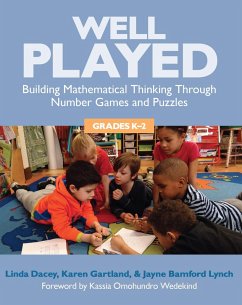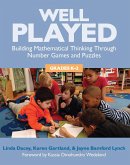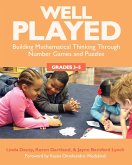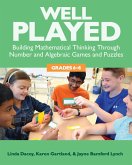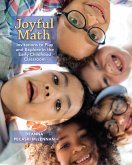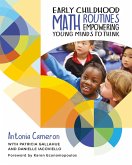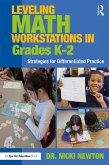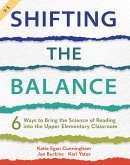Dieser Download kann aus rechtlichen Gründen nur mit Rechnungsadresse in A, B, BG, CY, CZ, D, DK, EW, E, FIN, F, GR, HR, H, IRL, I, LT, L, LR, M, NL, PL, P, R, S, SLO, SK ausgeliefert werden.
Are you looking for a way to add mathematically rich games to your students problem solving? Dacey, Gartland, and Lynch provide a valuable resource for K grade 2 educators to plan and implement puzzles and games. The authors begin by offering principles and guidance for implementation of games and puzzles in the classroom, based on their classroom experiences, field testing, and on research. The remaining chapters each present games, some familiar, some less common, on topics including counting and ordering, base-ten numeration, addition, and subtraction.
For use as a curriculum component or supplement, the book includes good attention to implementation and assessment as well as offering good examples, sample exit questions, suggestions for differentiation of games, options for directions and game variations, and consideration of students reading levels. A unique asset is guidance on students manners, norms for interaction, keeping the focus on the mathematics rather than secondary to superficial aspects or winning. A few minor modifications would have made the book an even stronger resource: additional guidance on assessment, such as a few example rubrics, clarifications to a few transcripts, and additional direction on creating cards or game boards to extend, differentiate, and vary the games. Consider teaming up with colleagues to analyze a game; then pilot it with a group of students before building a lesson or center around it.
Educators planning K grade 2 mathematics learning will find Well Played to be conceptually, developmentally, and pedagogically strong as well as fun and engaging for their schools.
Lucia M. Flevares, independent mathematics education consultant, Columbus, Ohio.

